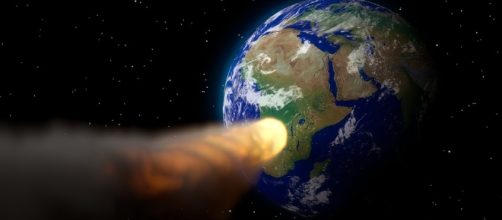A Giant Asteroid is about to pass Earth today which is the largest since 2004. The huge rock is expected to come close to the planet at a distance of 1.8 million km. But there is no need to worry since the asteroid will merely pass and will not cause any impact to Earth.
Nicknamed "The Rock," the asteroid was discovered in May 2014 by the astronomers of Catalina Sky Survey in Arizona and it was named as 2014 JO25. According to scientists, the nickname of the asteroid is to honor action hero Dwayne Johnson or it is also named after the Rock of Gibraltar, which is a monolithic limestone promontory on the Iberian Peninsula.
Details about the asteroid
It will be flying by at about 4.6 times the distance from the Earth to the Moon or 1.1 million miles (1.8 million km) at a speed of 33 meters per second. According to NASA's Jet Propulsion Laboratory, the asteroid will be about 2,000 feet or 650 meters across while the Arecibo Observatory in Puerto Rico said that its widest point as at 4,270 feet or 1.3 km. It is also estimated that its size is 60 times the asteroid that came to the atmosphere over Chelyabinsk, Russia in February 2013.
Using a radar, the scientists figured out that the asteroid is peanut-shaped and not round as what we always see in movies. Astronomers analyzed the orbit of 2014 JO25 and realized that the fly by on April 19 is the closest this asteroid came to Earth for at least 400 years.
The 3.1-mile wide asteroid named 4179 Toutatis that passed by Earth in 2004 was at 1.6 million km from the Earth.
Is it visible in the sky?
The 2014 JO25 is a bright asteroid which comes from the direction of the sun towards the Earth. Its surface reflects twice as much light as the moon. Although it is not visible to the naked eye, it can be seen in the sky using large and small telescopes beginning April 19 and for a few a days afterward before it finally fades away. But it will be closest to the planet at 8:24 a.m. EDT.
Although the asteroid has 0 percent impact probability to the Earth, the International Astronomical Union's Minor Planet Center still consider it as "potentially hazardous" due to its enormous size and its closeness to the planet.
Astronomers will continue studying the asteroid even after its flyby.
While many people are looking forward to seeing the asteroid via telescopes, astronomers have their eye on another asteroid which will come even much closer to Earth. This asteroid is named 1999 ANIO, which is a half-mile wide rock that is predicted to pass the Earth in 2027. Its distance to the planet is a little less than the moon at 236,000 miles or 380,000 km.

